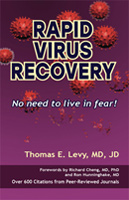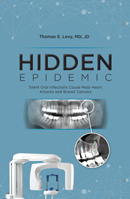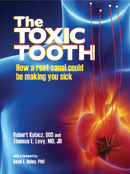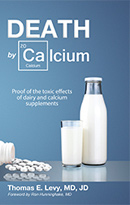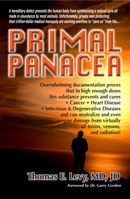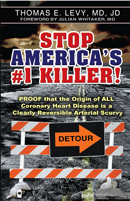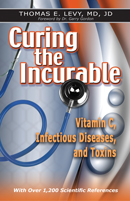Can natural protocols be an effective treatment for Ebola?
October 19, 2014 by Dr. Thomas LevySince writing "Surprising solution for Ebola virus" and having it published by NaturalHealth365 August 3, 2014, a lot has transpired. The Ebola epidemic was only beginning, and it had only been featured in the nightly news for about 2 weeks at that time. Nobody, I believe, had any clear handle on what was going to happen or how the epidemic was going to evolve.
Over the 10 weeks since that article first appeared, and especially over the last 4 weeks or so, I have received a literal avalanche of emails from around the world. Most of them were very supportive of my efforts to let those "in charge" know there were real options available to stop Ebola beyond vaccines, isolation, antipyretics, nutrition, and vigorous hydration ("feed 'em and fan 'em, as we used to say when I was an internal medicine resident at Tulane University in New Orleans).
A few, however, have tried to demonize me by saying that I should be ashamed of myself for even suggesting something as outlandish as vigorous vitamin C supplementation to help facilitate recovery from an Ebola infection. One individual even suggested an article like mine should be illegal, as it threatened lives. Imagine, vitamin C threatening someone's life! But the beat goes on...
For the record, let's be perfectly clear about vitamin C and Ebola
One thing I would like to immediately clarify. Vitamin C has never cured Ebola virus, or to my knowledge, accelerated its resolution. Also, to my knowledge, no attempt has even been made to utilize this phenomenal vitamin/nutrient in such a fashion.
What vitamin C has done, and this has been reported in the medical literature, is to disintegrate or otherwise inactivate every virus against which it has been tested, and many different viruses have been subjected to such experiments. As reported in my earlier article, Dr. Frederick Klenner resolved viral syndromes routinely and with dispatch by using multigram doses of vitamin C intravenously (50 grams at a time or more).
He even reported on several patients comatose with viral encephalitis. These individuals regained consciousness within a few hours of the vitamin C infusions and ultimately recovered, typically in days, not weeks or months.
Now, with specific regard to Ebola, it is just as important to support the body as to make it difficult for the virus to survive. Although several cases have now occurred in American healthcare workers, the rapid spread is mainly occurring in Africans that don't have anything close to the average nutritional status of even a teenager in the United States subsisting predominantly on Chicken McNuggets. This makes an enormous difference in the effectiveness of any therapy, including vitamin C.
When do infectious diseases cause the most harm to human health?
When Dr. Klenner treated an acute viral syndrome with intravenous vitamin C, there was typically an immune system with adequate capacity to "mop-up" the toxic debris resulting from massive viral disintegration. However, in the typical Ebola patient in Africa, vitamin C, ozone, ultraviolet blood irradiation, and all of the other treatments known to stop viruses in their tracks will be releasing toxic byproducts into a body that has already been chronically decimated by malnutrition.
Even the best-fed individuals in the areas affected do not have a wide variety of good foods, and significant nutritional deficiencies can be expected to be present among them as well. Remember that you do not have to be pathologically skinny to actually be severely malnourished. Even obese individuals have managed to get scurvy in the past.
Simply put, nutritionally-deficient individuals run the greatest risk of premature death from infectious diseases.
How to reduce the risk of infectious diseases
While I don't intend to present a comprehensive potential treatment for Ebola in this article, I emphasize to anyone wanting to treat Ebola with anything to include the following considerations (I am avoiding specific dosages, since this can range very widely depending upon the clinical circumstances):
1. The 'multi-C protocol' (Vitamin C, highly-dosed in multiple forms), as outlined in my previous writings.
2. Adequately dosed vitamins K and D - the blood level of vitamin D should end up between 60 and 80 ng/cc; proper D levels are enormously important in helping vitamin C to bolster the immune system and prevent and/or resolve an infection.
3. Adequate B vitamins.
4. Vigorous hydration, orally and intravenously.
5. High quality nutrition - as liquids and solids as tolerated.
The regular administration of vitamin C powder in such liquids can help heal the sick and malabsorbing gut present in these clinical situations; even in those with illness-induced diarrhea large amounts of vitamin C powder and nutrient-rich liquids can resolve this more quickly and allow the quality nutrients being swallowed to end up being better absorbed and assimilated.
6. Other quality supplements/nutrients. It is important to realize that many people adversely affect their digestion when very large amounts of different supplements are taken, and this should be even more significant for the chronically malnourished patient. Other supplements can certainly be taken, but not to the detriment of ingesting adequate amounts of good nutrients, liquid and solid.
Making the hospital setting a safer place for everyone
An additional important point is that it is very critical for much the same regimen to be utilized in the healthcare workers who are tending to Ebola patients, regardless of how much protective clothing is worn or antiseptic measures are being taken. The virus can only propagate once it takes hold, and it can only take hold when a large exposure is suddenly encountered and assimilated.
There is nothing a virus "wants to encounter" less than a high antioxidant presence in the blood and extracellular fluids after it gets into the body. With our current state of knowledge on Ebola, healthcare workers have every right to be anxious over their possibility of getting infected, and until more practical clinical knowledge is acquired, they need to receive pretty much everything the patient receives, as itemized above, and including intravenous administration of vitamin C.
References:
1. Baxter A (2000) Symptomless infection with Ebola virus. Lancet 355:2178-2179. PMID: 10881884
2. Levy T (2002) Curing the Incurable. Vitamin C, Infectious Diseases, and Toxins. Henderson, NV: MedFox Publishing
3. Klenner F (1971) Observations of the dose and administration of ascorbic acid when employed beyond the range of a vitamin in human pathology. Journal of Applied Nutrition 23:61-88
4. Levy T (2012) Treating influenza with vitamin C: results and mechanisms. Townsend Letter December
5. Klenner F (1948) Virus pneumonia and its treatment with vitamin C. Southern Medicine & Surgery February, 110:36-38, 46
6. Cathcart R. (1984) Vitamin C in the treatment of acquired immune deficiency syndrome. (AIDS). Medical Hy
More articles:
June 22, 2013 | Liposome-Encapsulated Glutathione
July 9, 2013 | Root canals are a primary cause of chronic disease
June 27, 2013 | Calcium, the Toxic Supplement
July 28, 2013 | Vitamin C With Vaccinations
August 3, 2013 | Avoiding Digestive Toxicity
August 10, 2013 | The disease causing dangers of high iron levels
August 19, 2013 | Vitamin C better than chemotherapy
September 2, 2013 | The marketing myth of ’vitamin C complex’
September 18, 2013 | Cardiologist speaks truth about cholesterol and statins
October 2, 2013 | Reverse shingles with vitamin C
October 14, 2013 | The effective prevention and treatment of radiation exposure
October 29, 2013 | Undiagnosed scurvy causes widespread disease
November 19, 2013 | Eliminate lead toxicity by consuming vitamin C
November 29, 2013 | New study says high fat diet is healthy
January 1, 2014 | Osteoporosis is much more than calcium deficiency
February 21, 2014 | Vitamin C is the 'muscle' of the immune system
March 11, 2014 | Reversing disease with the 'multi-C' protocol
April 6, 2014 | The dangers of magnesium deficiency
April 11, 2014 | Exposing the truth about liposomal nutrients
July 13, 2014 | Best nutrients to have in your ‘one a day’ supplement
August 3, 2014 | Surprising solution for Ebola virus
October 19, 2014 | Can natural protocols be an effective treatment for Ebola?
November 16, 2014 | Medical warning: Gluten allergies affect everyone
December 5, 2014 | Holistic dentistry pioneer Dr. Hal Huggins dies at 77 but his legacy will live forever
December 23, 2014 | Can a dental infection cause a massive heart attack?
January 29, 2015 | Most cardiologists shocked to discover the true cause of heart attacks
September 2, 2015 | The number one cause for 90 percent of all heart attacks
February 15, 2016 | The most popular vitamin C myths exposed
February 27, 2016 | How to effectively treat viral infections, including Ebola and Zika
March 14, 2016 | The never-ending war against vitamin C
May 22, 2017 | Vitamin C and sepsis: The genie is now out of the bottle
June 22, 2019 | Most cardiologists shocked to discover the true cause of heart attacks
July 3, 2019 | Can a dental infection cause a massive heart attack?
September 30, 2019 | Medical warning: Gluten allergies affect everyone
March 19, 2020 | Best nutrients to have in your 'one a day' supplement
October 30, 2020 | The dangers of magnesium deficiency
About NaturalHealth365
Dr. Levy regularly contributes brief articles of interest to the NaturalHealth365 website, which can accessed here: www.naturalhealth365.com.


